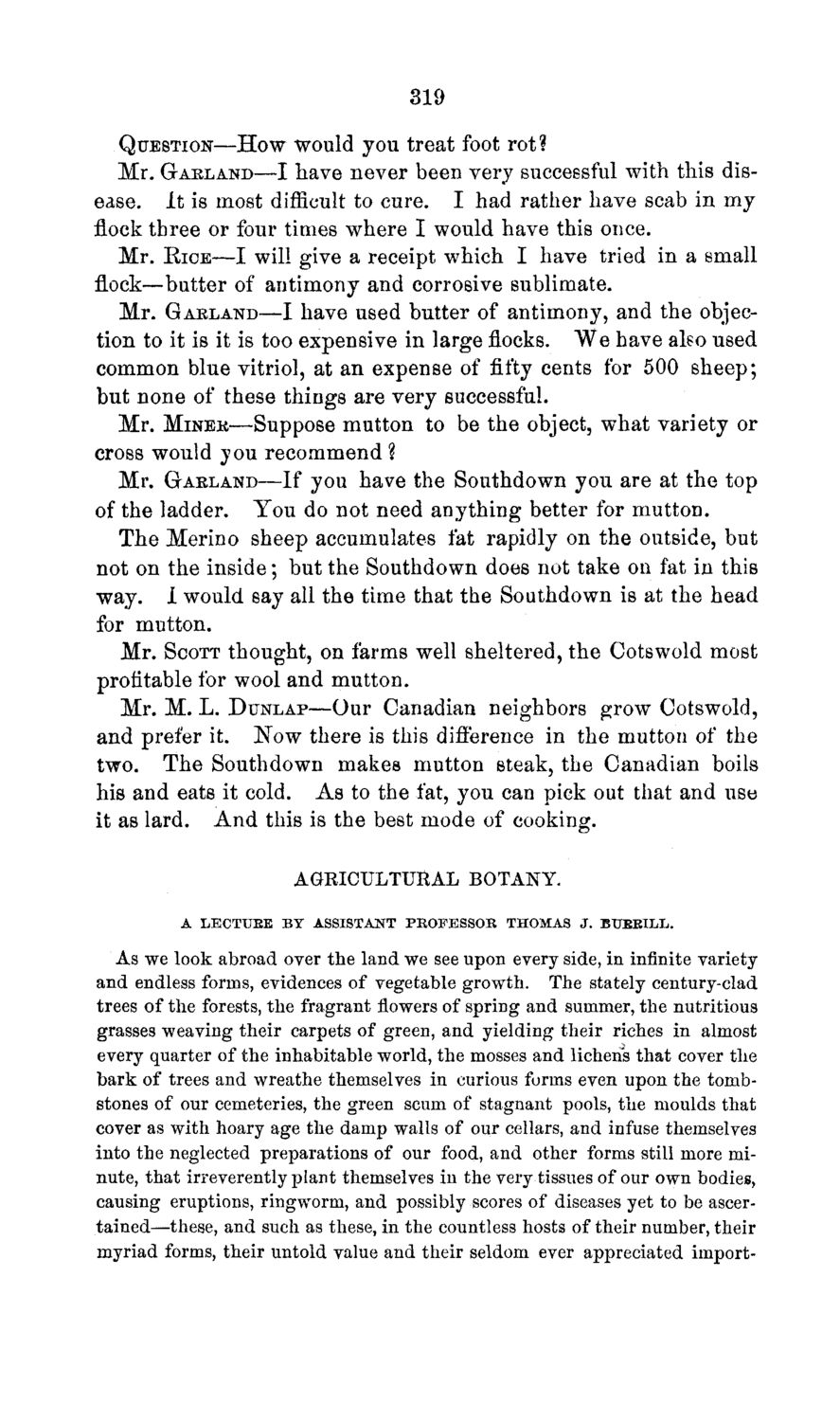| |
| |
Caption: Board of Trustees Minutes - 1869
This is a reduced-resolution page image for fast online browsing.

EXTRACTED TEXT FROM PAGE:
319 QUESTION—How would you treat foot rot? Mr. GARLAND—I have never been very successful with this disease, i t is most difficult to cure. I had rather have scab in my flock three or four times where I would have this once. Mr. R I C E — I will give a receipt which I have tried in a small flock—butter of antimony and corrosive sublimate. Mr. GARLAND—I have used butter of antimony, and the objection to it is it is too expensive in large flocks. We have also used common blue vitriol, at an expense of fifty cents for 500 sheep; but none of these things are very successful. Mr. MINEK—Suppose mutton to be the object, what variety or cross would you recommend ? Mr. GARLAND—If you have the Southdown you are at the top of the ladder. Tou do not need anything better for mutton. The Merino sheep accumulates fat rapidly on the outside, but not on the inside; but the Southdown does not take on fat in this way. I would say all the time that the Southdown is at the head for mutton. Mr. SCOTT thought, on farms well sheltered, the Cotswold most profitable for wool and mutton. Mr. M. L. DUNLAP—Our Canadian neighbors grow Cotswold, and prefer it. Now there is this difference in the mutton of the two. The Southdown makes mutton steak, the Canadian boils his and eats it cold. As to the fat, you can pick out that and use it as lard. And this is the best mode of cooking. AGRICULTURAL BOTANY. A L E C T U E E B Y ASSISTANT P R O F E S S O R THOMAS J . BTJBRILL. As we look abroad over the land we see upon every side, in infinite variety and endless forms, evidences of vegetable growth. The stately century-clad trees of the forests, the fragrant flowers of spring and summer, the nutritious grasses weaving their carpets of green, and yielding their riches in almost every quarter of the inhabitable world, the mosses and lichens that cover the bark of trees and wreathe themselves in curious forms even upon the tombstones of our cemeteries, the green scum of stagnant pools, the moulds that cover as with hoary age the damp walls of our cellars, and infuse themselves into the neglected preparations of our food, and other forms still more minute, that irreverently plant themselves in the very tissues of our own bodies, causing eruptions, ringworm, and possibly scores of diseases yet to be ascertained—these, and such as these, in the countless hosts of their number, their myriad forms, their untold value and their seldom ever appreciated import-
| |